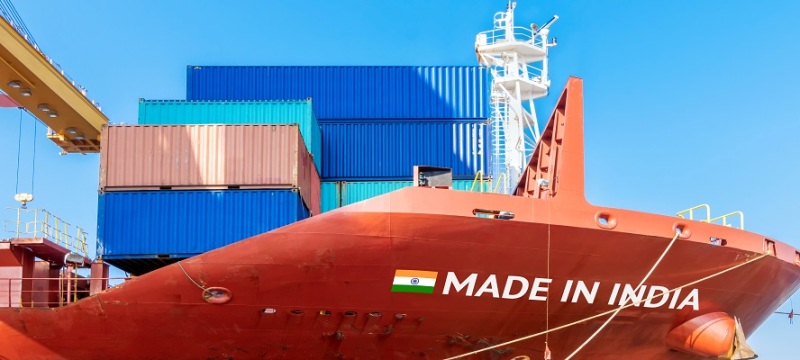
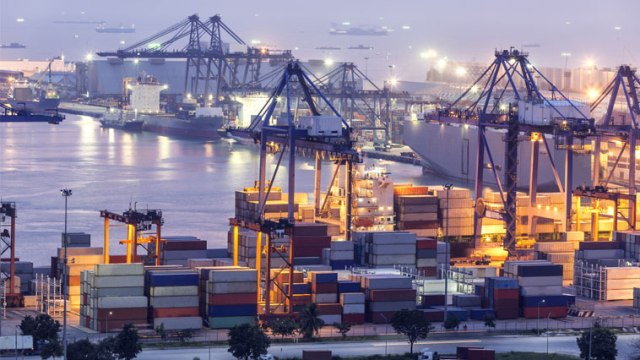
India’s export sector is showing bright signs of a leap to sustained growth, eventually hitting the goal of $2 trillion in exports by 2030.
India’s overall exports in October 2023 marked a strong increase of 9.43 percent, amounting to $62.26 billion over October 2022. Merchandise exports in October 2023 also jumped 6.21 percent to $33.57 over October 2022.
The higher export growth in October 2023 graced segments such as Drugs and pharmaceuticals, Engineering Goods, Electronic Goods, Cotton Yarn, Fabrics, Handloom, Iron Ore, Ceramic products, Glassware, Agriculture, Meat, and Dairy products.
There was notable growth recorded in drug and pharmaceutical exports by 29.31 percent. Engineering goods exports surged by 7.2 percent, and electronic goods exports grew by 28.23 percent compared to October 2022.
As usual, agricultural exports continued to grow in October 2023. They included cereal preparations and processed items such as oil seeds, fruits and vegetables, oil meals, spices, coffee, tea, and cashews.
Competitiveness upThe positive turn in export growth has two reasons. One was the decline of Chinese exports to the US over the last four years and India's rising exports to that country. This is borne out by the data from Boston Consulting Group.
It is also an expression of good health in the Indian manufacturing sector and a sign that Indian products are becoming more globally competitive than products from China.
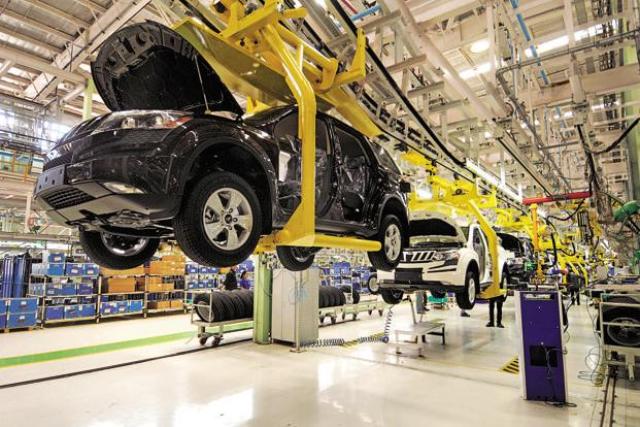 Car production
Car production
The manufacturing renaissance is the result of a slew of initiatives at the policy level and the determination of the private and public sectors. The deep focus on bolstering the manufacturing sector has become a fundamental aspect of comprehensive economic growth strategies.
Scope for logistics boostIn a report, the trade chamber-- Punjab, Haryana, Delhi Chamber of Commerce in India (PHDCCI) noted India’s advantage from comprehensive trade pacts, reductions in the cost of capital, power, and land reforms will help it reach the $2 trillion mark in exports by 2030. The report also called for schemes for 75 potential export products including iron ore, marine items, chemicals, pharma, cotton, aluminum, and tankers to promote shipments with high priority.
In the past few years, huge growth has happened in India’s exports in areas such as machinery, health, and wellness, food items, clothing, shoes, toys, etc. The government had unveiled a series of dedicated initiatives to revitalize manufacturing throughout the country. India’s manufacturing constitutes 15 percent of India's GDP.
Most of the manufacturing sectors are export-driven, bringing handsome foreign exchange earnings. Prominent sectors include pharmaceuticals, textiles, and automotive components. The manufacturing ecosystem also had a boost from factors such as a youthful population, a growing middle class, urbanization, and a favorable business environment.
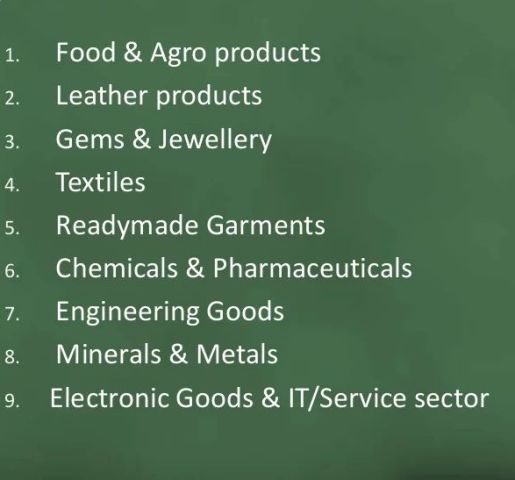 Top exports from India
Top exports from India
Various government initiatives have tried to seize some of the challenges, like infrastructure constraints, regulatory frameworks, access to credit, and shortages of skilled labor.
Rising technology integrationIn a survey, PwC India mentioned that 54 percent of Indian manufacturing companies are implementing analytics and artificial intelligence for business functions as tech solutions. However, 35 percent of companies have yet to seize this opportunity, including digital technology, to modernize their businesses.
Also, the rate of adoption of energy-efficient machinery is increasing, and companies are more sensitive to the need to cut operational costs, including energy charges.
Make in India by Modi governmentAmong the landmark initiatives, the ‘Make in India' campaign that started in 2014 envisioned transforming India into a global manufacturing hub. The National Manufacturing Policy (NMP) came with the idea of expanding the sector's contribution to the overall Indian economy in terms of more jobs and sustainable growth.
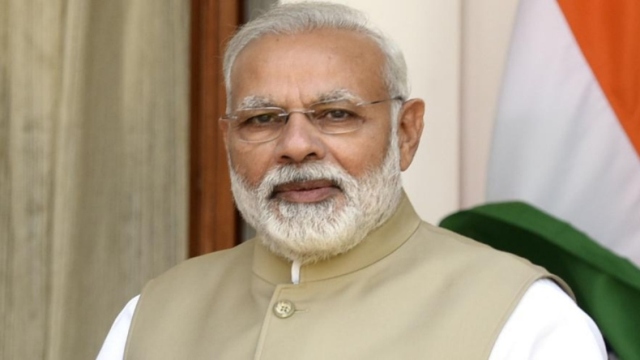 PM Narendra Modi
PM Narendra Modi
The “Atma Nirbhar Bharat” campaign wanted to reduce dependence on imports and promote domestic manufacturing. The PLI (production-linked incentives) scheme offered financial incentives to manufacturers across sectors. It covered 13 sectors to bolster the potential to attract investments totaling Rs 5 lakh crore in a period of five years.
Parallel to the bigger goals, efforts to upskill the Indian workforce, particularly in advanced industries, also raised the bar in the manufacturing sector and made it more competitive. There is an informal target of $2 trillion in exports from India by 2030 as India's GDP touches $7 trillion.
Cutting into China’s export marketsAt the beginning of this new millennium, China had an upper hand in exports to world markets. From just $254 billion in 2000, China will hit $3.73 trillion in exports in 2022. China also expanded exports to India during this period, going from a meager $1.47 billion in 2000 to a massive $102 billion by 2022. Rising Chinese imports slashed the size of the manufacturing sector in the GDP from 21 percent in 1995–96 to 16.3 percent in 2018–19. In the US, China's exports bulged from $100 billion to $536.3 billion in 2022.
A leap in E-commerce exports is likelyMeanwhile, India is on the way to discovering its huge potential in the e-commerce exports sector, according to Santosh Kumar Sarangi, Director General of Foreign Trade (DGFT) of India. Sarangi added that India’s e-commerce exports could jump to a mighty $200 billion-plus by 2030.
 Santosh Sarangi, Director, DGFT
Santosh Sarangi, Director, DGFT
The senior trade official was addressing the E-commerce Conference in New Delhi organized by the leading business chamber, the Federation of Indian Chambers of Commerce and Industry (FICCI), in mid-November 2023. Sarangi noted that the high export growth of India in e-commerce will be enabled by favorable factors such as product diversity, innovation, and the readiness of Indian entrepreneurs to offer tailor-made offerings to demanding markets.



